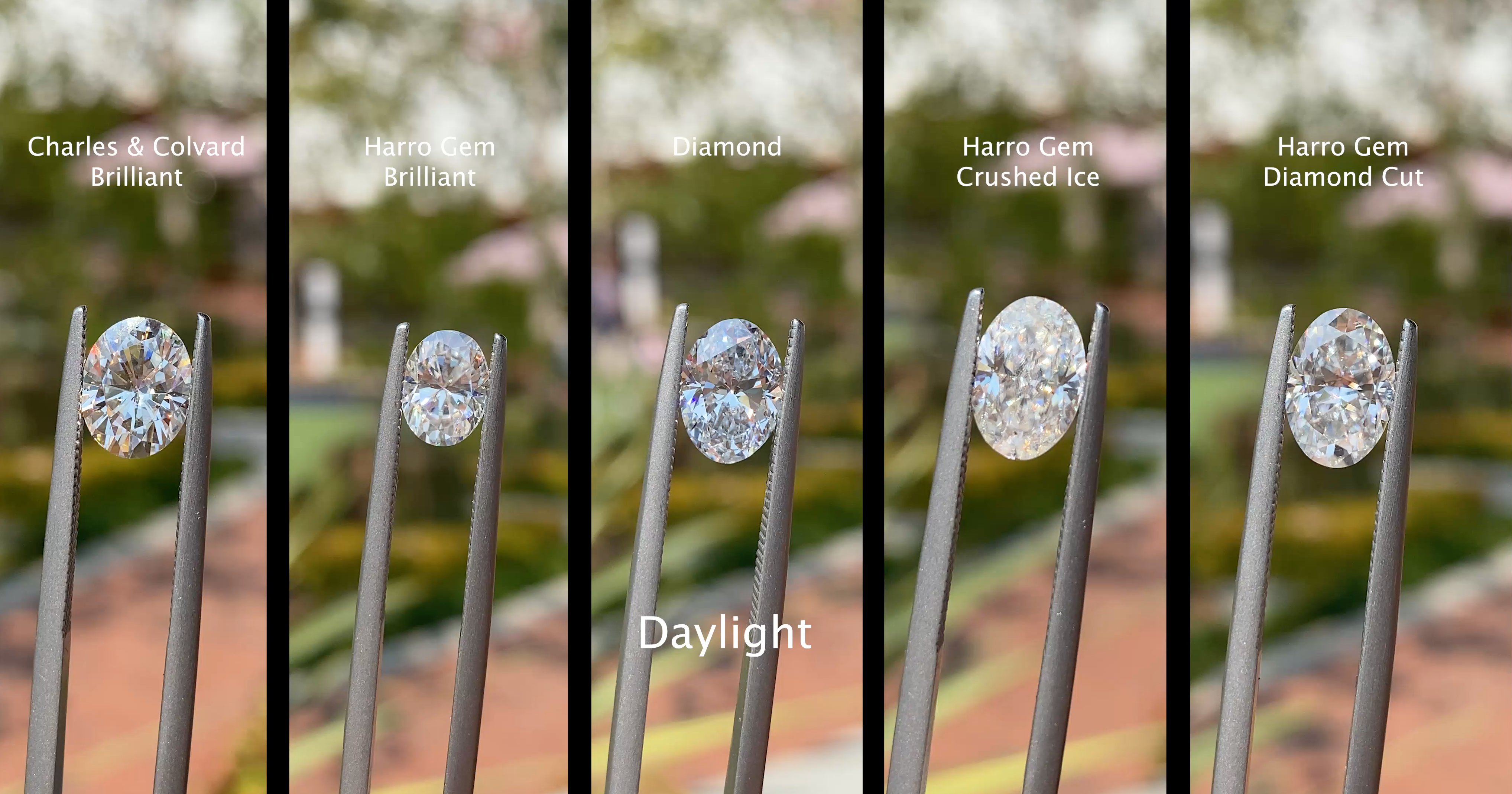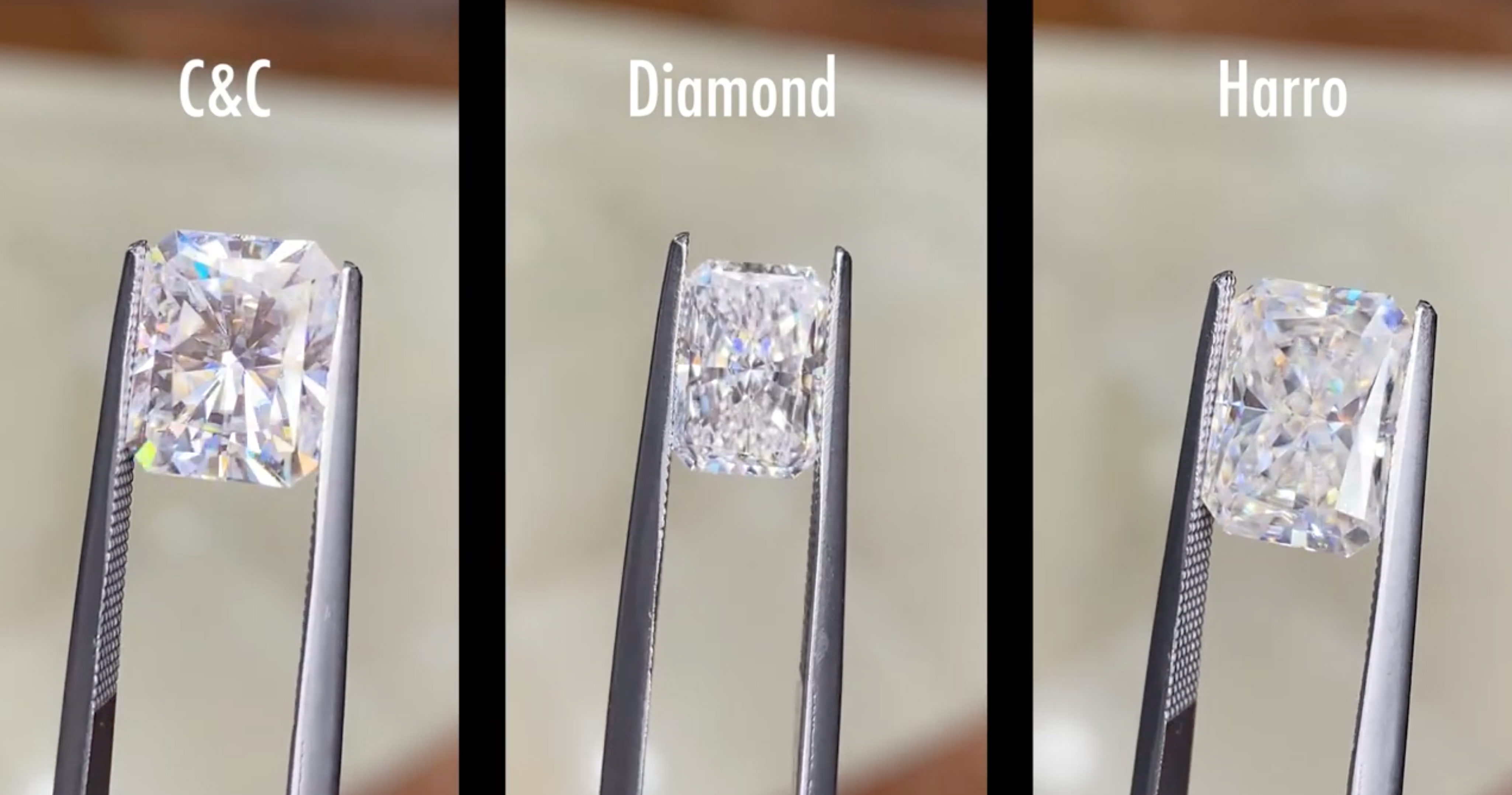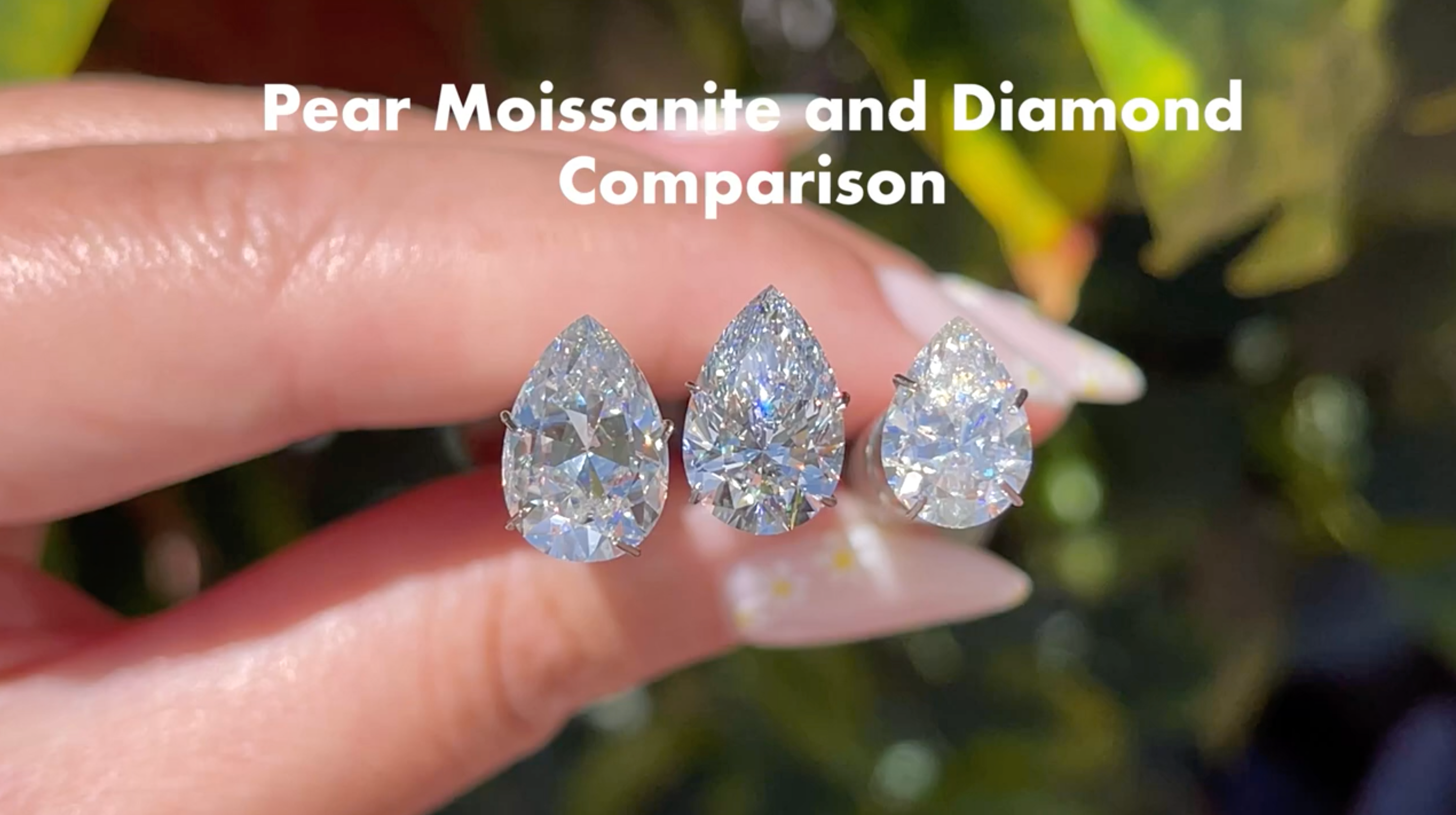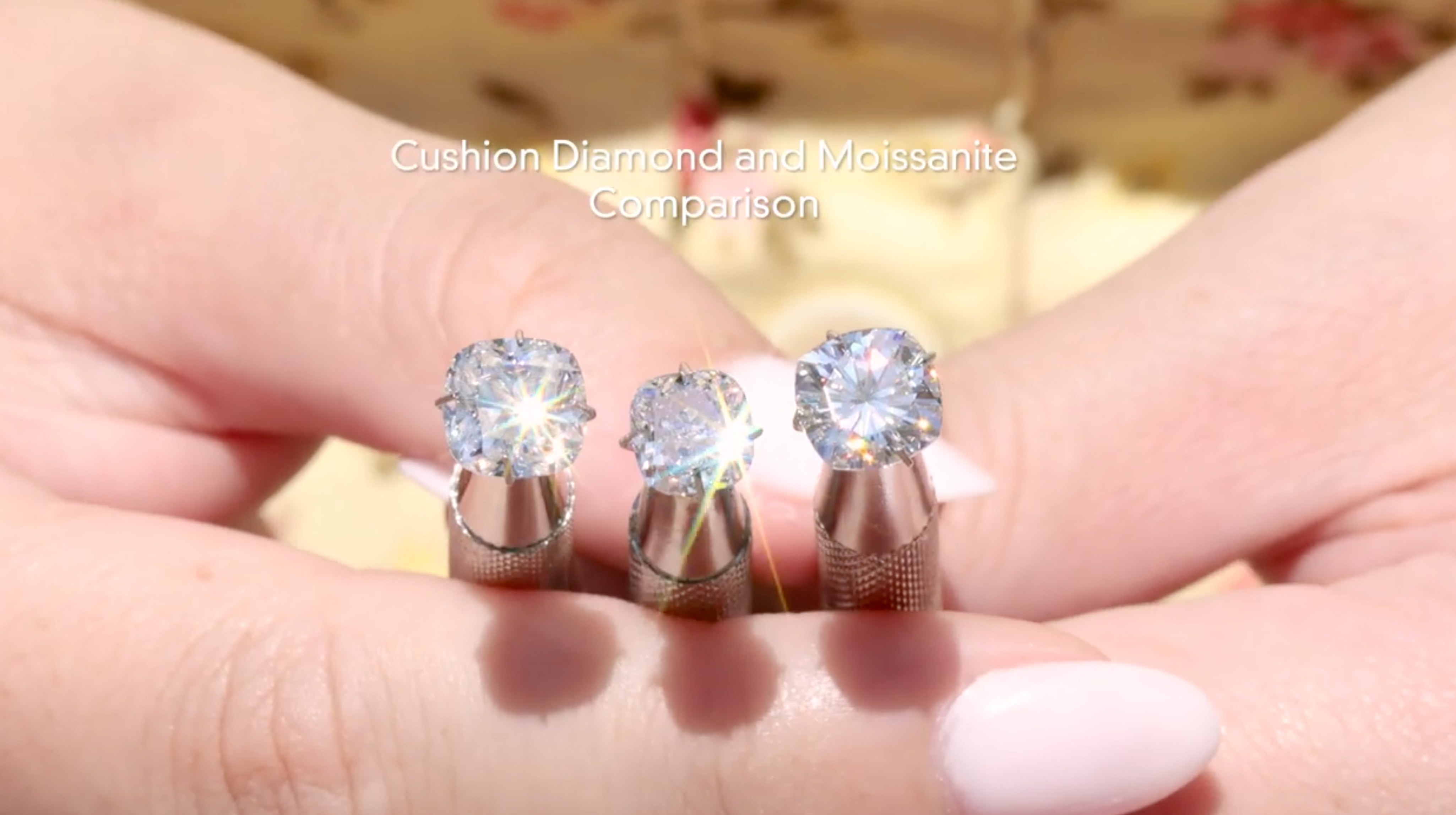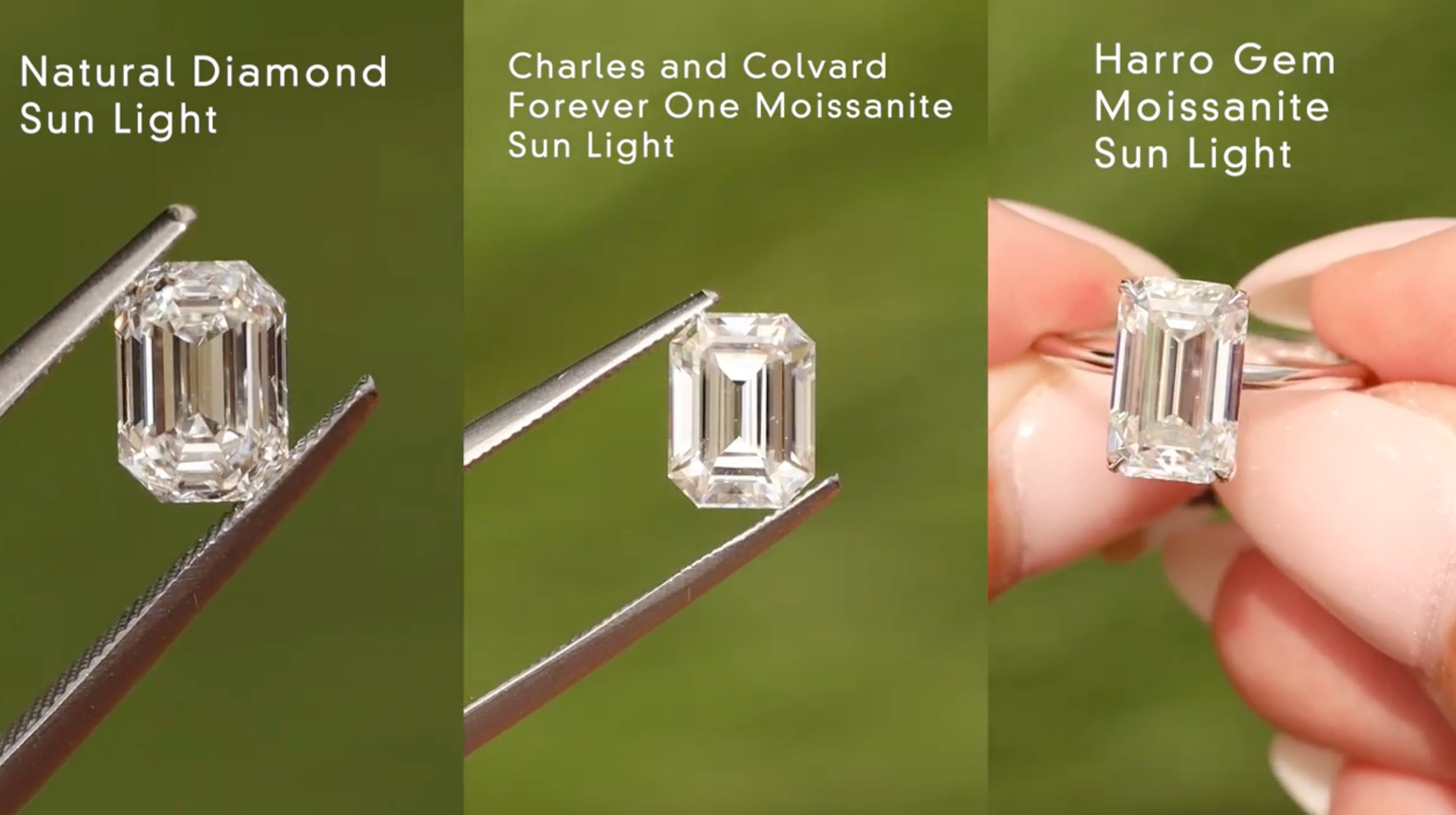Moissanite Guide
Welcome to our comprehensive guide to moissanite, where we explore the beauty, brilliance, and allure of this remarkable gemstone.
Moissanite Guide
Welcome to our comprehensive guide to moissanite, where we explore the beauty, brilliance, and allure of this remarkable gemstone.

Characteristics of Moissanite:
Moissanite is renowned for its exceptional brilliance, fire, and durability, making it an excellent alternative to traditional gemstones like diamonds. Key characteristics of moissanite include:
Brilliance: Moissanite exhibits a higher refractive index than diamonds, resulting in superior brilliance and sparkle.
Hardness: Moissanite ranks 9.25 on the Mohs scale of hardness, making it one of the hardest gemstones, second only to diamonds. This exceptional hardness ensures moissanite's durability and resistance to scratching, chipping, and abrasion.
Fire: Moissanite's dispersion, or fire, refers to its ability to break light into spectral colors, creating a dazzling display of rainbow flashes.
Color: Moissanite is typically near-colorless, with a slight yellow or green hue in some instances. However, newer generations of moissanite are available in a variety of color grades, including colorless and fancy colored options.
Similarities and Differences
Moissanite is renowned for its exceptional brilliance, fire, and durability, making it an excellent alternative to traditional gemstones like diamonds. Key characteristics of moissanite include:
Moissanite: Composed of silicon carbide.
Lab-Grown Diamonds: Composed of carbon, like natural diamonds, but created in controlled laboratory environments.
Natural Diamonds: Formed naturally deep within the Earth's mantle over millions of years, composed of carbon.
Moissanite: Exhibits exceptional brilliance and fire, often exceeding that of natural diamonds.
Lab-Grown Diamonds: Share the same exceptional brilliance and fire as natural diamonds.
Natural Diamonds: Renowned for their brilliance and fire, often considered the standard for comparison.
Moissanite: Available in a range of colors, from colorless to colored.
Lab-Grown Diamonds: Offered in similar color options as natural diamonds, from colorless to colored.
Natural Diamonds: Range from colorless to colored.
Moissanite: Lab-created in controlled environments.
Lab-Grown Diamonds: Also lab-created, using advanced technological processes.
Natural Diamonds: Mined from the Earth.
Moissanite: Rates 9.25 on the Mohs scale of hardness.
Lab-Grown Diamonds: 10, the highest level of hardness.
Natural Diamonds: Also 10 on the Mohs scale, making them and lab diamonds the hardest known substances.
Moissanite: Typically eye-clean with inclusions invisible to the naked eye.
Lab-Grown Diamonds: Varies just like natural diamonds, but usually eye-clean with minimal inclusions.
Natural Diamonds: Clarity varies from Included to Flawless, depending on the presence of internal flaws or inclusions.
